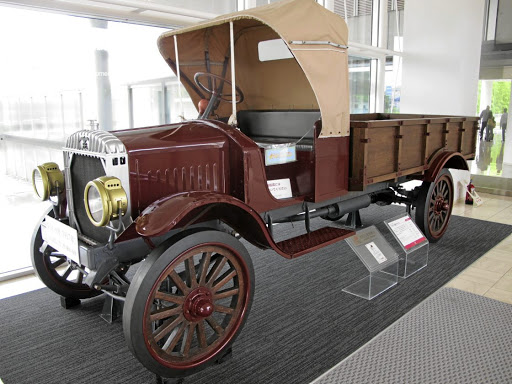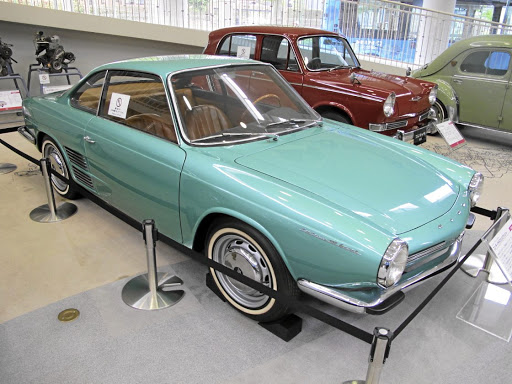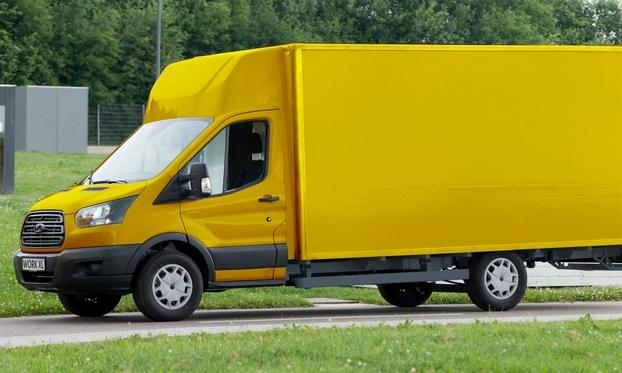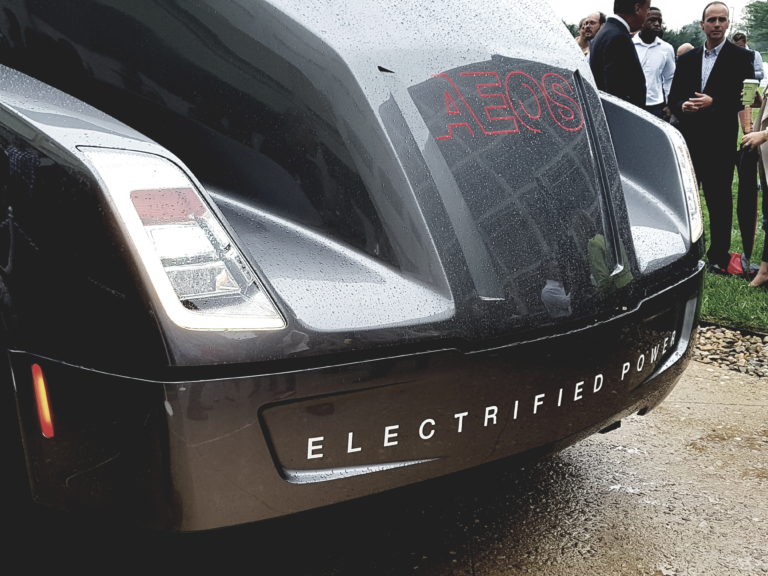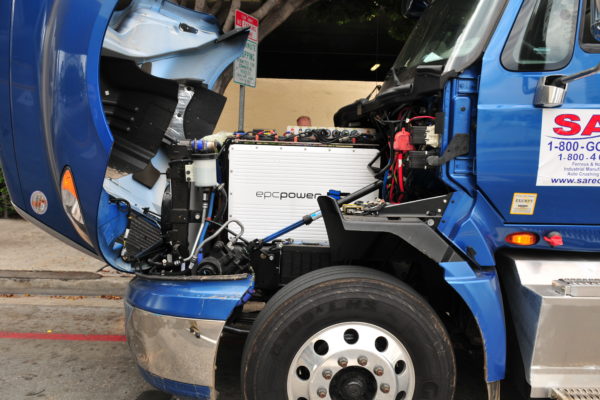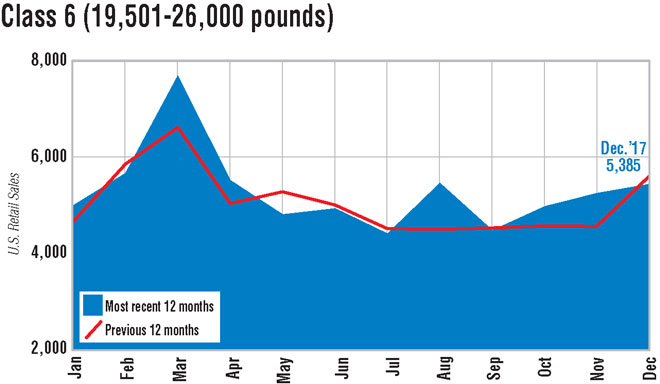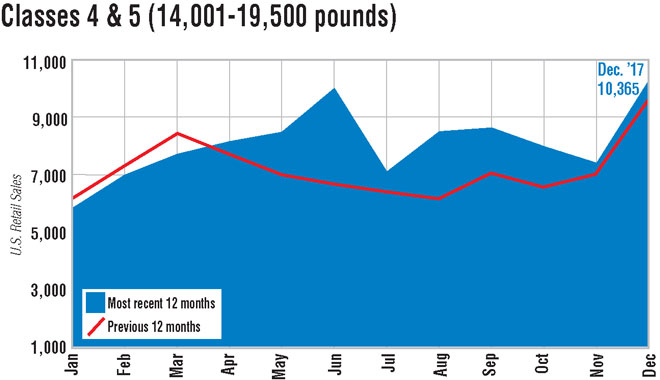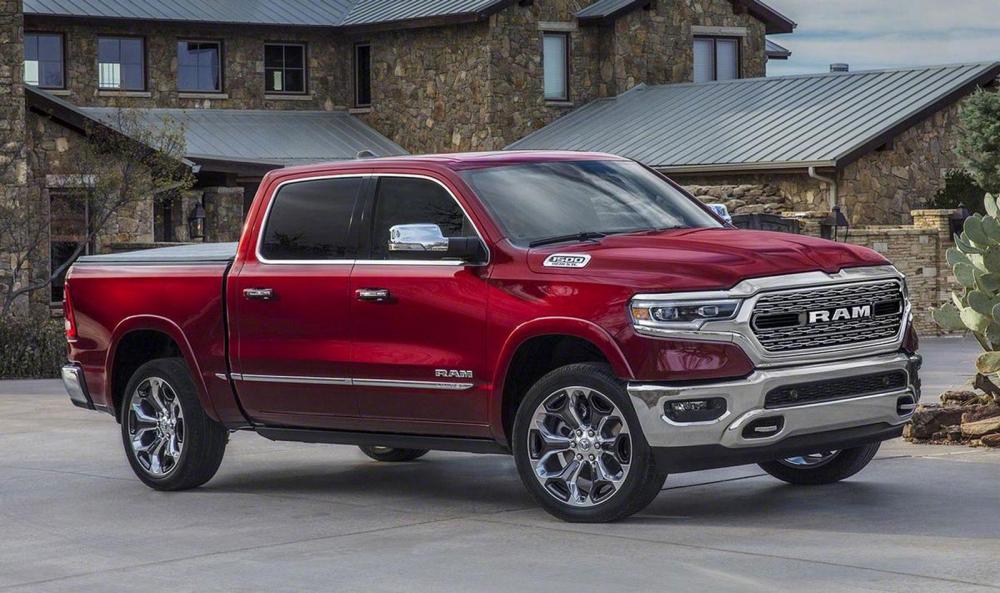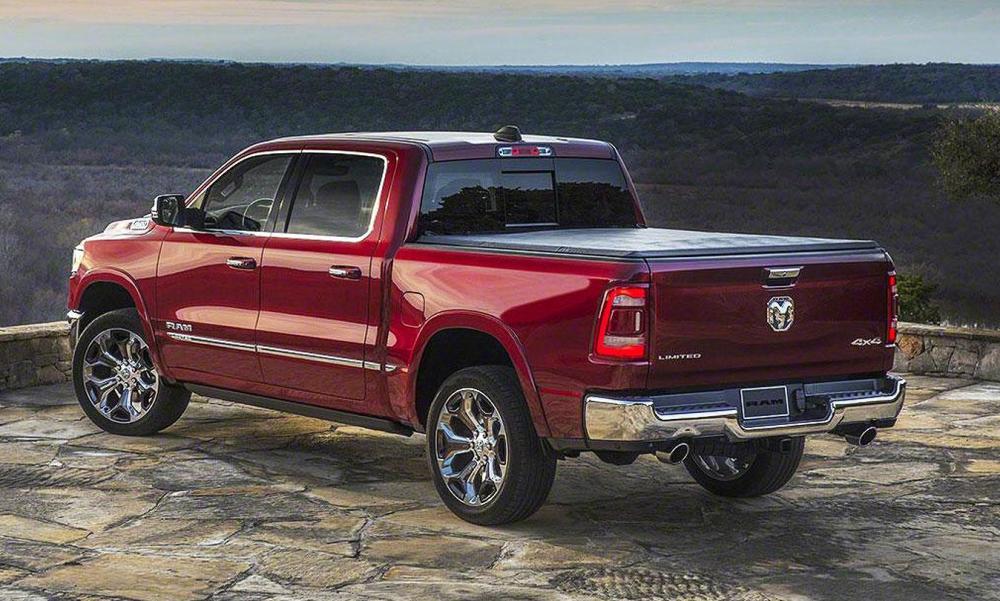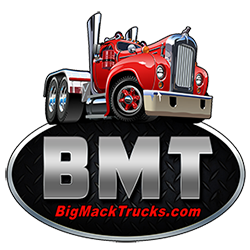
kscarbel2
Moderator-
Posts
18,873 -
Joined
-
Days Won
114
Content Type
Profiles
Forums
Gallery
Events
Blogs
BMT Wiki
Collections
Store
Everything posted by kscarbel2
-
http://www.france24.com/en/20180118-usa-california-turpin-parents-torture-taunted-starving-kids-with-pie-house-horrors David and Louise Turpin should be placed in a windowless cell and starved (a spade for a spade)......to death. And authorities should spread the word.
-
Associated Press / January 17, 2018 RIVERSIDE, Calif. (AP) — A California couple tortured a dozen of their children for years, starving them to the point that their growth was stunted, chaining them to their beds for up to months, preventing them from using the toilet at times and forbidding them from showering more than once a year, a prosecutor said Thursday. “The victimization appeared to intensify over time,” Riverside County District Attorney Mike Hestrin said in announcing charges. “What started out as neglect became severe, pervasive, prolonged child abuse.” David Turpin, 56, and Louise Turpin, 49, were charged with multiple counts of torture, child abuse, dependent adult abuse and false imprisonment. David Turpin was also charged with performing a lewd act on a child under age 14. The litany of physical and emotional abuse was enough to invoke a house of horrors that apparently went unnoticed for years in California and Texas until Sunday, when a 17-year-old girl managed to escape and call 911. The girl and her siblings had plotted the escape for two years, Hestrin said. Another girl who escaped out a window with the teen turned back out of fear. When deputies arrived at the four-bedroom, three-bathroom house on a dead-end street in Perris, about 60 miles (97 kilometers) southeast of Los Angeles, they were shocked by what they found. Malnutrition was so severe that it was consistent with muscle wasting and had led to cognitive impairment and nerve damage, Hestrin said. The oldest child, a 29-year-old woman, weighed 82 pounds. A 12-year-old was the weight of a typical 7-year-old. Some of the 13 children had been isolated so long they did not know what a police officer was. The victims range in age from 2 to 29. The torture and false imprisonment charges do not include the 2-year-old, who was not malnourished. All the children’s names begin with the letter J, according to court documents that didn’t provide their full names. The parents were jailed on $12 million bail each after pleading not guilty Thursday at their first court appearance. If convicted, they could be sentenced to life in prison. David Turpin’s lawyer, deputy public defender David Macher, had only begun to investigate the allegations, but said the case was going to be a challenge. “It’s a very serious case,” he said. “Our clients are presumed to be innocent, and that is a very important presumption.” David Turpin’s father, James, the grandfather to the children, said from his home in Princeton, West Virginia, that he did not believe the reports about the abuse. “I’m going to talk with the children, find out the real story on this as soon as I can get a call through to them,” James Turpin told The Associated Press. David Turpin had worked as an engineer for both Lockheed Martin and Northrop Grumman. Louise Turpin identified herself as a housewife in a 2011 bankruptcy filing. The charges date to 2010, when the couple moved to Riverside County from outside Fort Worth, Texas. The abuse began in Texas with the children being tied to beds with ropes and then hog-tied, Hestrin said. When one child was able to wriggle free, the couple began restraining them with chains and padlocks — for up to months at a time, Hestrin said. At one point in Texas, the parents lived in a separate house from most of the children and dropped off food to the others from time to time, Hestrin said. When not restrained, the children were locked in different rooms and fed little on a schedule. Punishments included being beaten and choked, Hestrin said. On Sunday, three children had been shackled to beds, though the parents freed two of them — ages 11 and 14 — when officers knocked on the door, Hestrin said. Deputies found a 22-year-old chained to a bed. Human waste in the house indicated the children were prevented from using the toilet. Sheriff’s deputies said the stench in the house was overwhelming. The children never received dental care, and they had not seen a doctor in more than four years. When the girl who escaped was asked if any pills were in the home, she did not understand what medication was. The children, who were schooled at home, were rarely seen outside the house, though the parents posted photos of them smiling together at Disneyland and in Las Vegas, where the couple renewed their wedding vows. In addition to raising them largely in isolation, the parents may have been able to hide the abuse by functioning while other families slept. The children were reared on the graveyard shift, with the family staying up all night and going to bed shortly before dawn, Hestrin said. In the neighborhood where the kids were hardly known, a steady flow of strangers visited the house Thursday and left stuffed animals and large bouquets of red heart-shaped balloons on the walkway. A home-made poster taped to the house said: “We stand united with the Turpin children.” Neighbor Josh Tiedeman-Bell grappled with how he and others in the tight-knit development that hosts an annual barbecue and Christmas decorating contest could be unaware of what happened there. He recalled seeing the Turpin children doing yard work in the evenings but it didn’t seem unusual in light of the blazing midday heat. He said a handful of the kids came to a neighborhood Christmas event one year and didn’t say much, but he would never have thought this was why. “We were all like a part of their nightmare,” he said, fighting back tears. While the children were deprived of food, the Turpin parents ate well and even tormented the children by putting apple and pumpkin pies on the kitchen counter, but not letting them have any, Hestrin said. Similarly, the children were not allowed to play with toys, though many were found throughout the house — in their original packaging. “This is depraved conduct,” Hestrin said. “It breaks our hearts.” One of the only things the children were allowed to do was to write in their journals. Investigators were combing through hundreds of journals found in the home, Hestrin said. They are expected to provide powerful evidence against the parents. .
-
Medium-Duty Segment Ends Year With Steady Growth
kscarbel2 replied to kscarbel2's topic in Trucking News
Wards Auto / January 12, 2018 U.S. medium- and heavy-duty truck sales hit 43,534 in December, 24.3% above year-ago’s 36,365. With seven months of consecutive year-over-year gains, big trucks ended the year at 415,042 units, 3.5% ahead of like-2016’s 400,996. Class 8 sales posted a 48.5% gain, a third December best, to 22,355. The push wasn’t enough to equal last year’s total of 192,662, with 2017 falling 0.2% short to 192,252. Segment leader Freightliner almost doubled its volume, reaching 8,504 deliveries and accounting for a 38.0% market share. Volvo was the only truck maker in the group to underperform in December, down 12.8%, outweighing sister brand Mack’s 5.8% gain. That left Volvo Truck down 4.5% for the month. Medium-duty truck sales totaled 21,179, a 6.1% bump compared with year-ago’s 20,736, ending the year up 6.9% at 222,790 deliveries. All medium-duty classes exceeded 2016 sales, topped by Class 4’s 30.7% increase to 18,690 deliveries. Class 7 deliveries jumped 14.1% with large volume gains from Freightliner (+27.9%), Ford (+65.2%) and Kenworth (26.6%). Freightliner accounted for a 46.7% market share for the year and ended 2.5% above year-ago with 29,256 units. Class 6 was the only sector to finish below year-ago. Deliveries totaled 5,385 units, down 5.0%. Segment-leader Ford was the main downward force, with sales plummeting 39.3% from 2,883 units to 1,685. Runner-up Freightliner’s 49.0% bounce to 1,640 units wasn’t enough to offset Ford’s decline. Chevrolet’s LCF entered Class 6 for the first time in December with 7 units. Freightliner also clinched the No.1 spot in this class for the year with a 32.9% market share. Class 5 pulled off a 3.7% gain thanks to Ford’s 10.0% jump to 4,846 units and Hino’s 79.1% spike to 564. These gains offset FCA’s 15.0% plunge to 1,705 units. Ford held the No.1 spot in the class all year long, ending with a 63.0% market share and 9.9% gain over 2016. Class 4 continued to outperform any other class with demand jumping 30.3% to 2,328 trucks. Last month marked the best December since 2009 when 2,519 trucks were delivered. Hino was the only truck maker to decline, falling 8.5% below last year with 104 units. Mitsubishi Fuso saw the greatest improvement, soaring 710.0% from 15 to 117 units. For the year, Ford claimed first place with a 24.3% rise in sales and a 15.4% market share. With domestics and imports climbing 700.6% and 469.2%, respectively, GM grew from a 1.7% market share in 2016 to 9.3% in 2017. . -
Medium-Duty Segment Ends Year With Steady Growth
kscarbel2 replied to kscarbel2's topic in Trucking News
I observe a lot of growth in Class 5. But whereas in the past Ford would have dominated with the F-550, many companies, municipalities and utilities are instead buying Dodge (Ram) 5500s. The key reason being the class-leading Cummins engine. Class 5 sales also appear to be robbing sales from Class 4, customers purchasing a 5500 instead of the 4500. Bob, Ford could have given the Japanese low-cab-forward trucks some competition with the E-550. But only producing it for two years (2002-2003), they didn't give it a chance, nor did Ford make any effort to market it as a Hino/Isuzu/Fuso/UD alternative. It needed forward development (refinement), but it was a beginning. . -
Business Day / January 18, 2018 Hino celebrated its 75th anniversary last year and its history goes beyond just trucks Hino has been in South Africa since 1972 and has always been a strong competitor in the truck market. The company has big plans to accelerate its strategy here including a mission to become the top-selling truck brand through expansion of its model range with new models and entry into new segments. Many people are unaware of the history of the brand, which falls under the umbrella of Toyota. It started out as the Tokyo Gas Electric Engineering Company (Gasuden) in 1917. Isamu Hoshiko, who is considered the father of the Hino brand, had joined this company as its technical officer for automobile development, and in that year it produced the first local trucks in Japan that went on sale to the public. Name changes Working with the Ministry of Commerce and Industry, Gasuden developed a range of standard trucks under the Isuzu brand name in 1932. The corporate name was changed to Tokyo Automobile Industry in 1937 and to Diesel Motor Company in 1941. Its factory was in the Hino area of Tokyo. The following year Diesel Motor Industry, which was making Isuzu trucks, was split off from a new entity, named Hino Heavy Industries, and the Hino truck brand was born, based at the Hino City factory. The 75th anniversary of Hino as a standalone truck band was celebrated in 2017. What many people have been unaware of, including us previously here at Motor News, is that Hino even made a brief sortie into building and selling cars in 1953, starting with a tie-up with Renault. It later developed its own range of cars, called Hino Contessa, and a bakkie, the Briska. The company, which was renamed Hino Motors in 1959, set up a business partnership with Toyota that included building Hilux bakkies. The company stopped building cars under its own name in 1967, but continues contract assembly for Toyota at its Hamura plant, with Toyota models made there currently being the Land Cruiser Prado and Dyna light truck. Hino’s own focus has been on designing and making trucks and buses since 1967. It became a subsidiary of Toyota Motor Corporation in 2001 and its cumulative unit sales reached 3-million units in 2009. Over the years it has made many important technological advances, the most noteworthy being production of the world’s first diesel-electric bus, the Hybrid Inverter-controlled Motor and Retarder in 1991 — six years before Toyota launched its Prius hybrid passenger car. Dakar entrant It also entered the Dakar Rally for the first time that year and has continued to do so every year since then. It developed the world’s first engine equipped with electronically controlled, common rail fuel injection — the J08C — in 1995. Another breakthrough came in 2010 when several of its buses using fuel cells went into service on Tokyo airport routes. Diesel-electric hybrid powertrains have been expanded to include trucks and by 2012 more than 10,000 Hino hybrids had been sold, while a full electric Poncho bus went into pilot service that same year. The company has put increasing focus on exports in recent years and in 2007 the cumulative total of its vehicles exported from Japan, either built up or in kits, exceeded 1-million units. The number of exports also exceeded sales on the Japanese domestic market for the first time in 2007. Exports It now exports its trucks and buses to more than 90 countries worldwide and operates four plants in Japan as well as several full-scale manufacturing facilities in other countries, including Thailand, Pakistan, China and the US. In addition, it exports semi-knocked-down or knocked-down kits to several other countries for local assembly, including SA, where it began assembly of the new 500 Wide Cab variants in 2017.
-
Have a blood test done to confirm if you have a bacterial or viral infection. If the blood test indicates your neutrophil level is high and lymphocyte level is low, you have a bacterial infection which calls for a cephalosporin class antibiotic like Cefalexin. If your neutrophil level is low and lymphocyte level is high, you have a viral infection (antibiotics normally don't apply).
-
Ford ready to help Deutsche Post's electric vans go global
kscarbel2 replied to kscarbel2's topic in Trucking News
-
Ford ready to help Deutsche Post's electric vans go global
kscarbel2 posted a topic in Trucking News
Automotive News / January 17, 2018 MUNICH -- Ford Motor, which has been cooperating with Deutsche Post on electric vans, said it's ready to help the German mail operator take its surprise hit vehicle global. The U.S. automaker started working with Deutsche Post last year on making an electric delivery van in Germany. The deal, in which Ford supplies the chassis of its Transit vehicle, added to an expanding lineup of no-frills, zero-emissions products the logistics provider has developed since 2014 after it couldn't find a suitable solution among automakers to meet its needs. "If there were appetite, we could help to replicate the business" elsewhere, Steven Armstrong, who heads Ford's European business, said Monday in an interview in Detroit on the sidelines of the Detroit auto show. "We have had an early discussion that we do have that global footprint." Deutsche Post bought electric-vehicle manufacturer StreetScooter in 2014 and now has 5,000 vans and 2,200 bicycles or tricycles built by the unit in its delivery fleet. The Bonn-based mail service eventually plans to operate only battery-powered models and is looking to sell StreetScooter products to third parties like bakeries and airports. Outside customers for StreetScooter's vans in Germany already include municipalities, a fish retailer and an electric utility, with the biggest deal so far a 500-vehicle joint order from leasing operator Comco and Bochum-based community bank GLS, said Alexander Edenhofer, a Deutsche Post spokesman. While the companies are constantly in talks as partners, there are currently "no concrete plans" for expanding the Ford agreement, he said. The success of a company with no auto manufacturing expertise has annoyed Volkswagen Group, which is making record investments in EVs and had hoped to . help Deutsche Post develop an electric van. Mercedes-Benz has also responded after its one-time customer became a competitor, announcing plans to roll out the eVito. StreetScooter will be able to produce 20,000 vehicles a year once a new plant begins operating in mid-2018. The Ford Transit-based model, the Work XL, is the largest of the Deutsche Post unit's three electric vans, with capacity for more than 200 parcels and a range of as much as 200 kilometers (124 miles). "We're helping to make 2,500 vans this year," said Armstrong. "I'd like to think of them as the first 2,500." . -
It is bizarre.......very bizarre. Working people need to carry, meaning one needs the long bed (2317mm/7.6-foot at the floor) to do any meaningful work. That short bed (1549mm/5-foot at the floor) is just for groceries, especially if you have a tool box.
-
Paul Ritter, ex-Mack Trucks exec, to be buried in Huff’s Church cemetery The Morning Call / January 5, 2018 Paul C. Ritter, the former Mack Trucks Inc. executive who died Monday in his home, will be remembered next week in services at Huff’s Union Church in Berks County. The memorial service for Ritter, of Lower Macungie Township, will be 1 p.m. at the church at Conrad and Huffs Church roads, Hereford Township. Private interment will be in Huff’s Church Cemetery. Schantz Funeral Home of Emmaus is in charge of arrangements. Ritter, 81, a 1957 graduate of Lehigh University, worked 42 years in the sales and marketing staffs of Mack, serving in the company’s offices throughout the United States and Canada. In 1981, he was named president of Mack Canada Inc., where he served three years until his return to Allentown as a senior vice president of sales. He retired from Mack in 2001. Ritter also was a founder, board member and, recently, an adviser to the America on Wheels transportation museum in Allentown. Born in Hoboken, N.J., he was a son of the late Harry M. and Anne (Miller) Ritter. He was married to Rose (Esposito) Ritter, who died in 1996. They are survived by a son, Harry M. Ritter II of Bethlehem, and a daughter, Ann Maria McFarland of Seisholtzville.
-
Paul Ritter, ex-Mack Trucks executive, dies 11 days after crash; he was 81 The Morning Call / January 2, 2018 Paul C. Ritter, a former Mack Trucks Inc. executive from Lower Macungie Township, died Monday, 11 days after a tractor-trailer collided with his car. He was 81. Ritter died of natural causes, the Lehigh County coroner’s office said. An autopsy Tuesday found that his death was not related to the Berks County traffic accident. Ritter, of Steeplechase Drive, worked more than four decades in Mack’s heavy-duty truck sales and marketing, serving at the company’s Allentown headquarters and at offices throughout the United States and Canada. Robin Crawford, Mack executive director of corporate affairs, said Ritter was an ambassador of goodwill for the company. “I think everyone liked him,” she said. “He was well-suited for sales. He was very friendly, easy to get along with, and he understood the product. When you talk about Mack people, he was definitely Mack pride.” In 1959, he joined Mack Trucks. In 1981, he was named president of Mack Canada Inc., where he served three years until his return to Allentown as a senior vice president of sales. Ritter, who grew up in North Bergen, N.J., was a Lehigh University graduate with a bachelor of science degree in marketing. Ritter was pulling out of the parking lot of Moll’s Garage at 2936 Seisholtzville Road, Hereford Township, at 1:50 p.m. Dec. 21 when his car was hit by the tractor-trailer, according to state police at Reading. Troopers said he suffered a head injury in the crash, during which the truck dragged his car about 200 feet to a grassy embankment. Ritter was taken by ambulance to Lehigh Valley Hospital-Cedar Crest, where he was treated and released the same day, authorities said. The truck driver, David L. Steffey, 26, of Leesport, was not at fault, police said. Crawford said she was shocked by Ritter’s death, because she had heard he had recovered from the crash. “He was even able to joke about the accident,” she said. “He told friends that he was hit by a truck, but it was not a Mack Truck.” State police noted his car was hit by a Freightliner model. Ritter was pronounced dead 3:45 p.m. Monday in his home. The autopsy found his head injury in the accident did not contribute to his death. Since his retirement from Mack, Ritter has served as a board member and as an adviser to the America on Wheels transportation museum in Allentown.
-
The Morning Call / January 6, 2018 Paul C. Ritter, 81, of Macungie, died suddenly in his home on January 1, 2018. He was a was the widower of Rose (Esposito) Ritter. Born in Hoboken, NJ, he was the son of the late Harry M. and Anne (Miller) Ritter. Paul was a 1957 graduate of Lehigh University. Paul worked for Mack Trucks, Inc. for 42 years, retiring in 2001 as Vice President of Marketing. He was a member of Huff's Union Church. He was also a mason and member of the former Warren Lodge #13 and Phillipsburg Lodge #52 F&AM and was a founder of the America on Wheels Museum. Survivors: Sons, Harry M. Ritter, II and wife Carole of Bethlehem; Daughter, Ann Maria wife of Jeffrey McFarland of Seisholtzville; Grandchildren, Sean, Aaron, Brittany Ann, and Chelsea. .
-
. . . . .
-
Renault Trucks Press Release / January 12, 2018 . .
-
Team PETRONAS De Rooy IVECO - Africa Eco Race 2018
kscarbel2 replied to kscarbel2's topic in Trucking News
1/15/2018 IVECO dominates the Africa Eco Race 2018 in the truck category and finishes with the victory of Gerard De Rooy from Team PETRONAS De Rooy IVECO Gerard De Rooy wins the first place in the truck category of the Africa Eco Race 2018, having dominated the race from the start. In the Dakar 2018 Federico Villagra achieves his sixth podium in eight stages with a second place in stage 8 and IVECO places again three Powerstars in the top 10 of stage 8 The Africa Eco Race 2018 edition is over: after 12 stages and 6,500 km across 3 countries – 5 in Morocco, 6 in Mauritania and 1 in Senegal – fierce competition in breathtaking landscapes over fast rocky tracks and challenging dunes, the drivers and their crews have reached the shores of Lake Rose in Senegal to celebrate the winners and the big achievements of the rally. Gerard De Rooy, leader of team PETRONAS De Rooy IVECO, won the rally in the truck category, having maintained the lead over the trucks throughout the rally – on the fast rocky tracks as well as the extremely soft sands of the dunes. IVECO, official supplier of Team PETRONAS De Rooy IVECO for the eights consecutive year, provided the Africa Eco Race’s winning crew with the vehicles, engines and spare parts. The legendary reliability of IVECO trucks comes from this extreme experience, where every part of our trucks is put at the hardest test that could exist. Equipped with IVECO Cursor 13 engines – specially engineered by FPT Industrial, CNH Industrial’s powertrain brand – the vehicles deliver up to 1000 hp of power. The final stage saw the drivers compete in a short, final boost in the traditional last leg around Lake Rose, near Dakar. The crowds were out in force to encourage the competitors and celebrate the winners as they took their place on the podium on the beach of the lake. Dutchman De Rooy is very pleased with the rally: "I enjoyed both the beautiful specials and the toughness. That was what it was all about in the first place: having fun again. They were long specials, but still short days because we had almost no connection. I really look back on it with a very good feeling." In South America, the three IVECO Powerstars are fulfilling their potential, delivering consistently high performances and achieving placements in the Top 10 in the two stages after the rest day. In stage 7, Ton Van Genugten took the lead and never let go, winning the special two minutes ahead of teammate Federico Villagra, with Artur Ardavichus following 18 minutes later in seventh place. Stage 8 took the competitors on the 381 timed kilometers that ended the marathon stage between the Bolivian cities of Uyuni and Tupiza. The tracks were no big hazard for the IVECO crews in the world’s toughest Rally Raid: in spite of the heavy rain and flooded roads, the three IVECO Powerstars piloted by Federico Villagra, Ton Van Genugten and Artur Ardavichus reached the finish line of the special – and all three in the Top 10. Federico Villagra continued to deliver podium placements, crossing the finish line of stages 7 and 8 in second place. The Argentinian, who is aiming for victory through a consistent performance, is steadily closing in on leader Eduard Nikolayev. Ton Van Genugten followed his win in the stage 7 with a sixth place in the Uyuni-Tupiza special of stage 8, finishing 15 minutes behind the leader. Artur Ardavichus also delivered a consistent performance, completing stage 7 in seventh place and stage 8 in ninth, maintaining his position in the Top 10 of the overall classification. Due to bad weather in the south of Bolivia and north of Argentina, the organization decided to cancel Stage 9 (Tupiza – Salta). Overall Standings – Trucks Category – Africa Eco Race 2018 1. GERARD DE ROOY (IVECO) 45h53s 2. Tomas Tomecek (Tatra) + 5h12m32s 3. Johannes Van De Laar (DAF) + 6h49m12s Stage 8 – Rally Dakar 2018 1. Dmitry Sotnikov (Kamaz) 4h23m32s 2. FEDERICO VILLAGRA (IVECO) + 5m11s 3. Airat Mardeev (Kamaz) + 6m28s 4. Eduard Nikolaev (Kamaz) + 8m33s 5. Martin Kolomy (Tatra) + 12m11s ---------- 6. TON VAN GENUGTEN (IVECO) + 15m36s 9. ARTUR ARDAVICHUS (IVECO) + 41m36s Overall Standings – Rally Dakar 2018 1. Eduard Nikolaev (Kamaz) 28h15m06s 2. FEDERICO VILLAGRA (IVECO) + 46m25s 3. Martin Macik (Liaz) + 3h29m25s 4. Siarhei Viazovich (Maz) + 3h59m35s 5. Airat Mardeev (Kamaz) + 4h23m20s ---------- 6. TON VAN GENUGTEN (IVECO) + 4h31m08s 8. ARTUR ARDAVICHUS (IVECO) + 5h28m16s -
Team PETRONAS De Rooy IVECO - Africa Eco Race 2018
kscarbel2 replied to kscarbel2's topic in Trucking News
. . . . -
Team PETRONAS De Rooy IVECO - Africa Eco Race 2018
kscarbel2 replied to kscarbel2's topic in Trucking News
. . . . . . . -
Daimler launches Mitsubishi Fuso eCanter in US market
kscarbel2 replied to kscarbel2's topic in Trucking News
-
Matt Cole, Commercial Carrier Journal (CCJ) / January 16, 2018 More than 1,200 Kenworth and Peterbilt tractors are being recalled following the announcement last week of a recall from Eaton Cummins of certain automated manual transmissions. According to National Highway Traffic Safety Administration documents, Paccar is recalling approximately 1,222 model year 2018 Kenworth T680 and T800 and Peterbilt 567 and 579 tractors equipped with certain Eaton Endurant and Paccar automated manual transmissions. The transmission control module in these trucks could allow the engine to crank while in gear, allowing the truck to move upon cranking. Paccar will notify owners beginning Feb. 16, and dealers will update the TCM software for free. Owners can contact Peterbilt customer service at 1-940-591-4000 or Kenworth customer service at 1-425-828-5000 with recall numbers 1217F and 1717KWF. NHTSA’s recall number is 17V-840.
-
Jim Park, Today's Trucking / January 16, 2018 Electric trucks are coming to market on the strength of their lack of tailpipe emissions. Can the trucking industry get over the cost, weight and range hurdles? Electric trucks seem to be all the rage today, just as natural gas was to be the industry’s salvation just a few years back. There’s not much excitement in natural gas today, though it remains a viable alternative fuel. Electric trucks, on the other hand, are just beginning their climb to prominence. Interest in electric trucks peaked in November with the world’s first look at Tesla’s Electric Semi. Whether Tesla can carry the torch for battery-powered heavy trucks remains to be seen, but Elon Musk isn’t only player in the market. I drove a fully electric plug-in Transpower USA Class 8 tractor back in 2015. That truck had been in field tests at the port of Long Beach, California, for two years prior to that. The company made headlines recently announcing a partnership with Meritor that will make its technology commercially available in the spring of this year. There are a handful of others too: Motiv Power Systems, BYD, and others. Chinese-owned BYD is backed by Warren Buffett, and plans to open an assembly plant in Ontario sometime this year. In August, Cummins threw its hat into the electric ring with the unveiling of a concept truck called AEOS. Contrary to popular belief, Cummins is not getting into the truck manufacturing business. “Our power electronics teams and controls groups will be using it as a test vehicle as we develop the next generation of components for our electrification business,” said Julie Furber, executive director – electrification business development at Cummins. A new player, Los Angeles-based Thor Trucks, has developed a truck it calls ET-One. It made news in December with a video clip of the truck operating in southern California. This one is still early in development, but it has attracted more than a little investor attention. Navistar and Volkswagen have stated publicly they intend to have medium-duty truck in service by 2019, too. Oddly, much of the public’s attention has focused on an on-highway, over the road electric truck, which is probably the least-practical candidate for electrification. Yard tractors, refuse or utility trucks, port drayage trucks and the like — with limited service ranges and less sensitivity to weight — are more plausible options. Indeed, many such trucks are already in service. TranspowerUSA has a fleet of more than 20 trucks running 80,000-pound loads around the Los Angeles basin. Their current range is about 160 kilometers with a battery pack weighing between 4,000 and 5,000 pounds. That isn’t much heavier than the diesel engines they replace. Transpower also operates yard tractors and school and transit buses. Motiv Power Systems of Foster City, California, has refuse trucks on trial in Chicago where they reportedly manages routes of about 100 kilometers with an 18,000-pound payload while running a hydraulic compactor. Other companies such as Workhorse and Chanje are building Class 5 and 6 delivery trucks with ranges of 160 to 300 kilometers, ideal for local and regional pickup and delivery operations and so-called last-mile deliveries. Chanje’s chief executive, Bryan Hansel, the head of Smith Electric Vehicles until 2015, says the Model V8070 was conceived as an all-electric vehicle. It’s not a retrofitted, fossil-fuel van. “It was purpose-designed as a BEV from the ground up,” he says. “We will be producing these on a global scale so they will be economically priced. In fact, the purchase price will be on par with a similar diesel vehicle but with 70% lower energy and maintenance costs. The pass-through savings will come from our battery leasing program and energy supply service.” Then there are the lighter medium-duty trucks, such as Mitsubishi Fuso’s eCanter, which premiered at the IAA show in Hanover, Germany, last fall and made its North American debut in October. It’s a Class 4 with a battery capacity of 70 kWh and a 185 kW motor. Depending on the body, load and usage, it has a range of more than 60 miles with a payload of more than 5,000 pounds. The company says in designing the powertrain, it chose to favor higher payloads rather than extend the potential range of the truck, based on the preferences of European customers who are already using the previous generation of the truck, the Fuso Canter E-Cell. Approximately a third of the 8 million fossil-fueled trucks and buses in North America are ideal candidates for electrification. These vehicles drive planned local routes of less than 160 kilometers a day with a lot of starts and stops, and they usually park at a depot overnight, which typically has the infrastructure necessary to charge the vehicles. As for Class 8 line-haul trucks? Not likely, says Furber. “The current battery technology just isn’t ready for the linehaul market where trucks can run up to 140,000 miles [225,000 kilometers] annually,” she says. “We’ve done some rough calculations that show you’d need a battery that weighs 22,000 pounds to complete a full day’s driving at highway speeds.” Benefits, challenges, batteries Musk claims his Electric Semi will run up to 800 kilometers on a single charge at highway speeds at full gross weight, but he didn’t disclose any details about the size, weight, or cost of the battery pack. We made several attempts to contact Tesla Motors seeking insight on their battery systems but they never returned our calls and email messages. Instead, we found a report in Wired magazine, from June 2017, that suggests the Tesla Semi will run a lithium-ion battery system that generates 243 watt-hours per kilogram at the cell-level. To cover about 1,000 kilometers without stopping to charge, the authors say, the truck would need a 14-ton battery — which isn’t out of line with Furber’s estimates. Based on current prices, those packs would cost between US $290,000 and $450,000. The authors also note that a next-generation “beyond-lithium-ion battery-pack” could provide a 1,000-kilometer range at a cost of about $180,000, leaving enough room for a payload of about 16 tons. While weight is still a significant concern according to many observers, battery costs could become less of an issue in the future. Last July, Bloomberg New Energy Finance analyst Claire Curry reported that lithium-ion battery prices have tumbled since 2010, dropping from roughly $1,000 per kilowatt/hour then to about $275 in 2016. With prices stabilizing at some level close to this, Curry believes that BEVs will accelerate to 54% of new car sales by 2040. “Tumbling battery prices mean that BEVs will have lower lifetime costs, and will be cheaper to buy, than internal combustion engine cars in most countries by 2025-29,” she notes. Among the many questions still to be answered is how electric trucks will play in the maintenance sphere. Since BEVs have fewer moving parts that are prone to failure, the big questions is, how long could they last? What’s the vehicle’s lifecycle going to look like? “The current useful life of a typical diesel is five to six years. If these BEVs start going out 10, 12 or 15 years, what will that do to fleet trade cycles?” asks Scott Perry, who was until recently the chief technology and procurement officer for Ryder Global Fleet Management Solutions. “What will happen to the value of traditional trucks if electric vehicles gain sudden market acceptance?” Voluntary or regulatory adoption So what will it take to make all this talk of zero-emissions commercial vehicles a reality? Many fleets still struggle with the cost of the things; others see the limited range of some vehicles as an insurmountable hurdle. But solutions are there: fuel cells, range extenders, more batteries, etc. Or, just having a close look at the route and service areas and deciding where trucks can work and where they won’t. Like anything in the trucking business, the term one-size-fits-all just doesn’t apply. “There are four of five key factors that will drive adoption in the near term, says Cummins’ Furber. “Regulation, technology readiness, technology cost, charging infrastructure, and finally the Total Cost of Ownership [TCO] calculation. Regulation could drive small scale adoption in certain areas, such as California. We know that in trucking, TCO is going to be what plays out as the main driver. In Perry’s opinion, electric trucks are the next wave. “It will start in the light and medium duty classes where the technology is available today, and spread to the heavier classes as the technology proves itself,” he says. “Regulations will drive adoption as well. We’ve seen cities like London, Paris, Athens, and others banning fossil fuel vehicles in city cores. Some U.S. cities are looking at that, too.” But there’s nothing like public opinion to motivate regulators. The public seems to be leaning very heavily in the electric direction. And there are the image-conscience shippers. Last year, Chattanooga, Tennessee-based U.S. Xpress held a customer summit where Trevor Milton, Chief Executive Officer of Nikola Motor Company, made a presentation on hydrogen-powered trucks. “As a group of shippers, they were pretty excited,” said U.S. Xpress executive chairman Max Fuller. “Some of them are now trying to lock in all the electric trucks they can get. They like emissions-free. That’s the image the shippers want.” Can the grid handle electric trucks? Very few new large-scale power plants have been built in Canada in the past 10 years, yet demand for electric energy is sure to rise, fueled by interest in Battery Electric Vehicles (BEV). Does the grid have the capacity to handle the expected infusion electric cars and trucks? The short answer is yes, but some adjustments may be necessary. Demand for electricity is not constant throughout any 24-hour period, so the time of day when the energy is required has a very large impact on the grid’s ability to meet demand. Since our electric grid has no storage capacity, power generation and transmission must be continuously managed to match fluctuating customer load. If the growing fleet of personal and commercial BEVs were to be plugged in all at once, on top of today’s regular daily demand, it would be a big problem. But BEVs for the most part will charge overnight when demand is lowest. Once the commercial fleet reaches a critical mass, this will allow energy producers to run their facilities at higher and more efficient output during overnight periods of traditionally lower demand. A secondary advantage now being tested is to have the batteries on individual vehicles serve as a sort of surge protector for the grid, and as a buffer in the event of a significant disruption in transmission — such as a blown transformer or a downed high-tension power transmission line. They could also provide fill-in capacity at times when wind or solar output may be diminished. Writing in the New Journal of Physics, researcher Andrej Gajduk notes that potential benefits of a Vehicle-to-Grid (V2G) concept include offering a possible backup for renewable power sources including wind and solar power, load balancing by valley filling, and peak load shaving among others. “The V2G concept can improve grid efficiency, stability, reliability,” he writes, “and can reduce utility operating costs and even potentially generate revenue for the consumer.” .
-
- 1
-

-
Today's Trucking / January 16, 2018 It’s Tuesday afternoon, a little after 2 pm. You’re the operations manager of a major truckload carrier. The morning rush is over, all the drivers and customers are happy, and now you’re gearing up for the onslaught of late-afternoon messages from customers wondering where their trucks are and drivers alerting you that they can’t load ’til tomorrow. Typical day. Then a driver calls on his mobile phone. “My engine has just shut down and I’m sitting deader than a doornail in the center lane of Highway 401 between Dufferin and Keele Street,” he says. “No warnings, no red or yellow lights. It’s just quit. Traffic was too heavy for me to get over to the shoulder. I’m blocking traffic. What a mess.” Then your phone chirps with a text message: “Send 20,000 in bitcoin and you can have your truck back.” Most of you are now chuckling, saying, “that could never happen.” Well, it has happened, on a test rig, and it’s likely to happen someday in real life if manufacturers, regulators and fleets do not take appropriate actions to protect certain vulnerabilities in the basic electronic architecture of nearly every truck built in the past 20 years or so. What began as a class project at the University of Michigan Transportation Research Institute (UMTRI) in the spring of 2016 made it to the pages of Wired magazine as a sort of follow up to the widely reported controlled hacking of Jeep Cherokee while it drove around public highways in St. Louis, Missouri. The exercise was also controlled, conducted on a closed test track, and the hacker was sitting in the sleeper with a laptop plugged into the OBD port of a 2006-vintage Class 8 tractor. Last year, the University of Tulsa in Oklahoma began research on a truck-in-a-box. It was a typical Class 8, electronically speaking, but just the wiring and electronics. Researchers there were able to dig pretty deep into that system as well with very little difficulty. Those two projects were just demonstrations, accomplished with hard-wired connections to the truck. But nobody today can guarantee that today’s connected truck is completely and absolutely safe from some kind of deliberate intervention. “What concerns me, as a fleet equipment manager, is increased opportunity for cyber attacks because of the inter-connectivity of our vehicles and all of the components now,” said Gary Hunt, vice-president of equipment and maintenance at ABF Freight System. “When you talk about how these different components are going to talk to the truck, across the J-1939, through our telematics system, to us, those are all opportunities that somebody else can talk to those components and get into the truck. That’s a real concern for me.” Hunt was speaking at the at the inaugural meeting of a new Taskforce on Cybersecurity at the American Trucking Associations’ Technology and Maintenance council’s annual meeting earlier this year. He was part of a panel that was trying to raise awareness among member fleets and suppliers of the cybersecurity challenges the industry faces. Last fall, a similar meeting took place at the Society of Automotive Engineer’s Commercial Vehicle Engineering Congress in Rosemont, Illinois. A panel discussion there laid bare the threat faced by industry. It’s real. Very real. A large part of the potential threat comes from the J-1939 data bus. It’s an open standard and provides a great deal of efficiency to the industry, but its open design makes it vulnerable. “We worked, as an industry, to develop that open architecture, so that we could have this great flexibility, as fleets, as OEMs, to work collaboratively. Is J-1931 now going to be our Achilles heel?” asked Hunt. The open-architecture CANBUS is just one of the challenges. To really look at the whole attack surface, we need to look all the way up and down the supply chain, noted Keith Doorenbos, a system engineer with Paccar who attended the taskforce session. “So the OEs buy major systems and components from a lot of large suppliers, who, in turn, buy from other suppliers. And when we complete our part of a truck, we hand it off to bodybuilders, to telematics providers, and to the fleets. Even drivers are installing or connecting their own electronics to the truck. So every piece that gets connected provides another path into the system and another risk to the system,” he said. Theoretical models have been developed that suggest even diagnostic tools could be used to move a virus-like attack from one truck to the next, but so far, Doorenbos says that’s entirely theoretical. “I don’t believe it’s even been demonstrated by any of our white hats [hackers working for good], but there’s a lot of exposures in different elements. Basically everything that’s ‘smart’ out there creates another opening.” Directed threats By now you might be prepared to concede that the potential for a cyber attack on a truck is real, but you’re having a hard time imagining why someone would bother. Well, a truck could become a pretty effective weapon in some sort of terrorist attack. There have already been examples of terrorists using trucks as a weapon in other areas of the world. Or it could be used by someone with an axe to grind, maybe even a kid who wants to prove something to his girlfriend. Doorenbos told those at the taskforce session that the threat could come from several quarters. “You’ve got the tuners, the age-old nemesis of OEMs; the people to go in and find ways to modify trucks to get more power, better fuel efficiency, and bypass emission systems without the approval of the OEMs,” he says. “Then you’ve got your prankster category — people who are just out to demonstrate that maybe they’re smarter than somebody else. And you’ve got your hacktivists, people who are either socially or politically driven with specific agendas. Hacktivists have an enormous amount of dedication to put into making their particular political or social point at anybody’s expense.” He says trucking hasn’t yet had a lot of exposure to what he called the classic cyber criminals who are after access to traditional servers for data-mining, identity theft, and financial theft. “At the top end of the system, you’ve got your nation states or pseudo-nation states, the types of organizations that have very large resources and are willing to mount large-scale, very sophisticated attacks in order to support political goals,” he warns. “They can be very difficult, if not impossible, to completely block if they come after a system.” More likely, Doorenbos believes, the biggest threat lays in the for-profit sector: cargo theft. “Right now that’s pretty much done using old-school methods,” he says. “What we’re trying to do is prevent giving them new techniques that might make that simpler, more efficient or more accessible.” Ongoing efforts There’s a huge amount of work in the background to better understand the scale of the problem, and a few solutions are emerging that will help slow the black hats down, even if we can’t shut them out completely. A key pillar of cybersecurity efforts is encrypting data and software so it can’t easily be reverse-engineered or accessed by outsiders. Another strategy is partitioning truck electronic architectures so that, rather than having a single-vehicle network on J-1939, there are a number of sub-networks separating the most critical systems from the less critical systems. Engineers are also inserting firewalls or gateways between the different networks so they can control the data and commands that can move from one network to another. “Even if somebody can compromise your telematics system that does not automatically give them immediately the ability to send commands directly to an engine or a brake,” says Doorenbos. On a sobering note, the U.S. National Motor Freight Traffic Association recently completed a survey to gather registration data for all vehicles launched since Model Year 2000. The results suggest that four out of every five trucks built in the last 15 years are still registered. That’s a lot of systems to reverse-engineer, partition, encrypt and protect. It’s a fairly new problem, but there are several U.S. universities now actively engaged in research on the subject, such as UMTRI and the University of Tulsa, among others. The U.S. Department of Transportation, the U.S. Department of Defense, the U.S. Department of Homeland Security, the FBI, and other U.S, government agencies are looking at it. And there are several industry groups very actively engaged in discussion and research on the subject, including SAE, Technology and Maintenance Council, National Motor Freight Traffic Association, and the Automotive Information Sharing And Analysis Center (Auto-ISAC). Auto-ISAC is an industry-operated environment created to enhance cybersecurity awareness and collaborate across the global automotive industry. Participants include including light- medium- and heavy-duty vehicle OEMs and their suppliers. Still largely absent from the table are carriers. Much of the message ABF’s Gary Hunt delivered at the Technology and Maintenance Counicl session was on the need for fleets to become involved. “I, as a fleet, have a definite dog in this fight and so does every [fleet] in here,” he said. Look at what’s at stake: safety of employees, safety of customers, safety of the industry and the safety of the general public. What can happen to my trucks can also happen to yours.”
-
Transport Topics / January 16, 2018 U.S. retail sales of medium-duty trucks climbed 5.4% in December, with only Class 6 volumes dipping from a year earlier, WardsAuto.com reported. Sales of Classes 4-7 trucks totaled 21,179 units compared with 20,096 in the 2016 period. For the full year, sales were 222,790, up 7.3% from 207,694 in the 2016 period. Gains in the period were led by a 13% rise in Classes 4-5. “The growth is not quite as spectacular or as volatile as you see on the Class 8 side [up 43% in December year-over-year], but ever since we came out of the Great Recession [medium-duty] has had a slow methodical, really sustainable, growth rate,” ACT Research Co. Vice President Steve Tam said. “You have investment by businesses, so there are more things being produced, and often it is the medium-duty guys who are at play in that space,” he added. Sales of Class 7 trucks in December jumped 12.9% to 5,429 and were spread among five truck makers. Freightliner led with a 47% market share. Paccar Inc. and Navistar International Corp. were next, while Ford Motor Co. and Hino Motor Sales USA Inc. tied with 264 sales each. Class 6 sales slipped 4.2% to 5,385 in a market crowded with seven truck makers. Segment leader Ford Motor Co. was the main downward force, with sales plummeting 41.5% to 1,685 from 2,883 units a year earlier. Ford did not immediately respond to a request for comment. Freightliner was right behind Ford, selling 1,640 trucks. Others ranked by sales included Hino, Navistar International, Paccar Inc. and Isuzu Commercial Truck of America Inc.. Also in December, GM launched its Chevrolet brand low-cab forward truck in Class 6, selling seven. Classes 4-5 rose 7.3% for the month to 10,365 trucks. Ford led in Class 5 with a 60% market share, or 4,846 trucks. Isuzu earned a 60% share in Class 4 with 1,394 sales. Kenworth Truck Co. announced its K270 Class 6 and K370 Class 7 models now come with the option of the Bendix Wingman Fusion advanced driver assistance system. “There are certainly folks, especially in the private fleets, who understand and are willing to make that kind of an investment in the equipment,” Tam said. Wingman Fusion offers enhanced collision mitigation, lane departure warning, stationary vehicle braking, and overspeed alert and action. .
-
FCA lavishes tech, safety gear on 2019 Ram pickup Larry Vellequette, Automotive News / January 15, 2018 DETROIT -- When FCA US abandoned mainstream compact and midsize sedans in 2016 to focus its limited resources on more profitable utility vehicles and pickups, analysts viewed the shift from cars as risky. But the redesigned 2019 Ram 1500 -- bowing Monday at the Detroit auto show -- appears to be a major beneficiary of the strategy, sporting a long list of engineering, safety, performance and functional improvements. The Ram pickup is the automaker's best-selling vehicle and the third-best-selling vehicle in the U.S. behind the Ford F series and Chevrolet Silverado. Even as it nears the end of its current product cycle, the outgoing Ram managed to chalk up a U.S. sales gain in 2017, topping 500,000 for the first time ever, including the decades when the Ram was part of the Dodge brand. With the redesigned Ram 1500 going into production this month -- along with the previous model, which will continue to be produced for up to a year -- FCA officials believe the Ram has a shot to knock the Silverado out of second place. Chevrolet plans a major redesign of the Silverado that is also on display in Detroit and will hit showrooms in the fall. But the new Ram bows in showrooms in the first half of 2017, giving FCA a chance to narrow GM's 85,000 unit sales lead with both a new and outgoing Ram. The 2019 Ram 1500 is bigger than the previous model, with overall length growing by 9 inches, including 4 additional inches to the cab. The added cab space enables the second-row seats to recline up to 8 degrees. The redesigned pickup is also stronger than the previous version. The frame is made of 98 percent high-strength steel. Also, a new eTorque mild-hybrid system increases torque by 90 pound-feet on the 3.6-liter V-6 engine, and by 130 pound-feet on the 5.7-liter V-8 engine. The eight-speed automatic transmission has also been improved. Maximum payload increases to 2,200 pounds and maximum trailer towing to 12,700 pounds. The 2019 Ram also boasts increased efficiency. A belt-drive generator and 48-volt battery are standard, as are short-term torque assist and regenerative braking. Drag coefficient improves to .357, with active grille shutters, raised bed rails, an air dam and air suspension contributing to a more aerodynamic ride. Fuel economy numbers were not yet available, however, and FCA has not yet indicated whether it will keep its 3.0-liter EcoDiesel engine as an option for the 2019 pickup. Even though it is longer, wider and taller than the previous Ram 1500, engineers were able to trim nearly 225 pounds from the latest model. Inside the cabin, legroom is increased in the first and second rows, while the reclining second-row seating has new folding center armrests. A new 12-inch infotainment touch screen dominates the instrument panel, with split-screen capabilities allowing simultaneous operation of up to two functions, such as the climate controls and navigation. A bird's-eye camera system eases parking, and the pickup gets Sirius XM's new 360L service that allows individualized streaming for subscribers. A 19-speaker, 900-watt Harman Kardon audio system with repositioned door speakers to improve sound quality is optional. Interior storage space is greatly expanded, including a larger reconfigurable center console that can be transformed into 12 storage combinations. The optional RamBox bed storage boxes include a three-prong 115-volt plug. The 2019 Ram 1500 will continue to be powered by the 305-hp 3.6-liter V6 engine or an optional 5.7-liter Hemi V-8. But engineers were able to quiet the cabin in the V-8 model by employing frame-mounted "active tuned mass modules," which work electronically to dampen engine noise in the cabin, reducing cabin noise to 67 decibels. Both engines are paired with an updated version of its eight-speed automatic transmission. In terms of safety, Ram incorporated new wheel blockers into its frame across all trim levels to improve performance in slight offset frontal crash tests. In addition to expected electronic safety features such as automatic braking and adaptive cruise control, the Ram 1500 will have available adaptive front lighting that illuminates up to an additional 15 degrees in the direction of travel. Pricing has not been announced. Production of vehicles for sale will begin this month. The previous-generation 2018 Ram 1500 will remain in production for "at least a year," FCA CEO Sergio Marchionne said in October, in part to help guard the new pickup's residual values. . .
BigMackTrucks.com
BigMackTrucks.com is a support forum for antique, classic and modern Mack Trucks! The forum is owned and maintained by Watt's Truck Center, Inc. an independent, full service Mack dealer. The forums are not affiliated with Mack Trucks, Inc.
Our Vendors and Advertisers
Thank you for your support!



